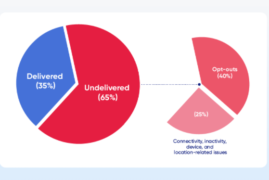App development, in some ways, isn’t unlike training a new employee to learn a fairly demanding job. You need to have a time-tested protocol, an experience-based strategy, and a firm timeline to get things done efficiently. You also need multiple tests to assess and evaluate the subject, and have the know-how and patience to address any mistakes. Additionally, you need to keep an external eye peeled for any new trends, information, or concepts that are making waves in the industry, and determine if it’s something they’d want to incorporate into the process. Finally, when all the testing and instruction is ideal, the subject is released into the market, primed for success.
So, developing and launching a mobile FinTech app should follow the above steps, more or less, and these best practices should be consistent yet flexible. We’ll go over a few of these steps, and how the unique aspects of a FinTech app apply.
FinTech Ideation and Strategy
When you’ve decided to focus yourself on a FinTech app, you should start with market research. Check out the most downloaded apps, and which sectors they belong to. Maybe there are a few covering the same subject, like budget management, for example. How are they the same, and how do they differ? Jump into reviews, both from users and professionals, and see what people are talking about; particularly, which features are working and which are turning users off, and why.
For example, an app like PayPal that enables users to quickly and easily send money to each other has clearly been an enormous success. It solves an obvious pain point, and was the first to do so, so that success is well deserved. So, if you want to stay in that niche and compete with a giant like that, you have to innovate. Venmo, for example, made sending money social; you can import contacts quickly, and your transactions go on a social feed along with a funny or meaningful note to your friend. Hey, if you have a truly original and novel idea, that’s great. It’s much more common, though, to adopt an existing idea or model to tweak and improve on.
Following trends and the latest successes can be dizzying work, to be sure; new apps drop on the daily, all looking to stand out in the fiercely competitive FinTech app market. Don’t get too caught up in the ultra-present, but make sure to keep a sharp eye on the trends and how they perform.
FinTech App Development
The development of a FinTech app doesn’t differ significantly from many other sectors, but there are many specific guidelines to note and regulations to comply with. Let’s go through the usual steps of development, and the particulars of what to pay attention to in regards to financial applications.
- Initial Development Strategy: We know how tempting it can be to go the quick and cheap route when you’re trying to get your app on the market. However, this can severely limit your short- and long-term success in ways you may have not thought of. First, your framework and coding need to be done with scalability and expansion firmly in mind. You should be as optimistic about the future success of your app as you are about the initial launch; and, if that rapid popularity of your app pushes it to the point of necessary downtime and clunky updates, you could lose that momentum that your launch started. Have your strategy minutely mapped out from the beginning.
- UX/UI: There’s an old saying in the app development circle that bad UX costs more than good UX. We can’t emphasize this enough. Trying to walk back poor experiences within your app can cost you time and reputation. Having a quality UX engineer can let you start with experienced guidance, and help you navigate all the innovations and rigorous testing that successful UX development requires.
- Testing Groups: Make certain that user testing and feedback sessions cover all the possible demographics you made the app for, and even the verticals you may not have considered. For example, a basic investment app may be geared towards millennials who may be just starting their education in the market but are digitally proficient. However, older folks who are in the same spot investment-wise but may not be as app-savvy as others may be the group that needs attention with intuitive UX and easy to understand functions. These often-overlooked target groups can make a huge difference in how your app performs.
- Security and Regulations: If you want to develop a FinTech app, security needs to be your top priority. And if your app stores or transmits money in any way, you’ll need all the newest tools available. There are various regulations to comply with, also. Make sure your app development partner has plenty of experience and insight in the financial field before you get going with them.
Building Your FinTech App
After you’ve come through the development phase, you should turn your attention to pre-launch marketing. You should be assembling relevant content (videos, blog posts, reviews, etc.) to feature on your website and social media channels, while also assembling an email list to engage potential users and let them know what your app is all about. Make sure to closely examine the requirements of whichever app stores your app will be featured on, as there are very specific guidelines that need to be followed.

